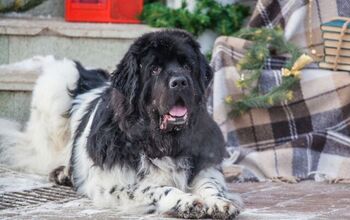Throughout history, dogs have played several key roles in the lives of people globally. They have hunted, worked, and provided for us, forever weaving them into the fabric of human existence. We often use this knowledge to better understand our modern dogs by reflecting on their original purpose as a breed. Unfortunately, not every breed continues to thrive among us today.The Coast Salish wooly dog was a unique breed, kept by the First Nations people throughout the Pacific Northwest, including Vancouver Island, for its fleece-like coat. A new study reveals insights into the history of the now-extinct breed.Unlike most animals at that time in history, the dog was kept in pens and longhouses. This was done to prevent the dogs from mixing with village and hunting dogs, preserving the breed and the fleece it provided.“They were sheared like sheep, and the wool was woven into blankets,” recounted Eliot White-Hill of the Snuneymuxw First Nation. “Blankets were like currency in our economy prior to contact and some of the most important things you could own and give away as gifts.”The dogs were fed a diet of fish and elk and were seen as beloved family members.“It’s not just a dog – it’s a relative. It has enormous spiritual power, conveyed in its wool,” explained Michael Pavel, an elder of the Skokomish-Twana tribe and one of the study's authors. “Imagine being able to receive the gift of wool fiber, being able to learn to weave that into yarn, into an entity, or a blanket or robe that you could wrap yourself in the coldest of winter and feel the warmth of those prayers. That’s how we look at it, and we can now enjoy a scientific view, as well.”Unfortunately, the breed did not survive colonization. It’s not clear exactly what caused the demise of the Coast Salish wooly dog – the introduction of European dog breeds, rules enforced on First Nations people during assimilation and displacement, or smallpox epidemics being a few of the hypothesized factors.But thanks to the preserved pelt of a wooly dog named Mutton, who died in 1859, researchers can now learn a little more about the unique DNA of the dog, its lineage, and insight into the breeding practices of local Indigenous communities.Researchers compared DNA from Mutton’s pelt to that of a separate non-wooly village dog that lived and died in the same region at approximately the same time.While the information gathered from the study did not offer any conclusive answers about the disappearance of the breed, it did hypothesize that the Indian Act of 1876 played a critical role as it would have directly impacted the ability of Indigenous women to pass on valuable knowledge about caring for the dogs and weaving necessary to its survival.On a positive note, the study did support historical facts shared by First Nations people in that area – a valuable piece of the puzzle as many work to reclaim the traditions of their ancestors.“It brought a large group of people together that reaffirmed for us the history we know,” stated Violet Elliott, also of the Snuneymuxw First Nation. “It was a gift of collaboration with other nations.”












